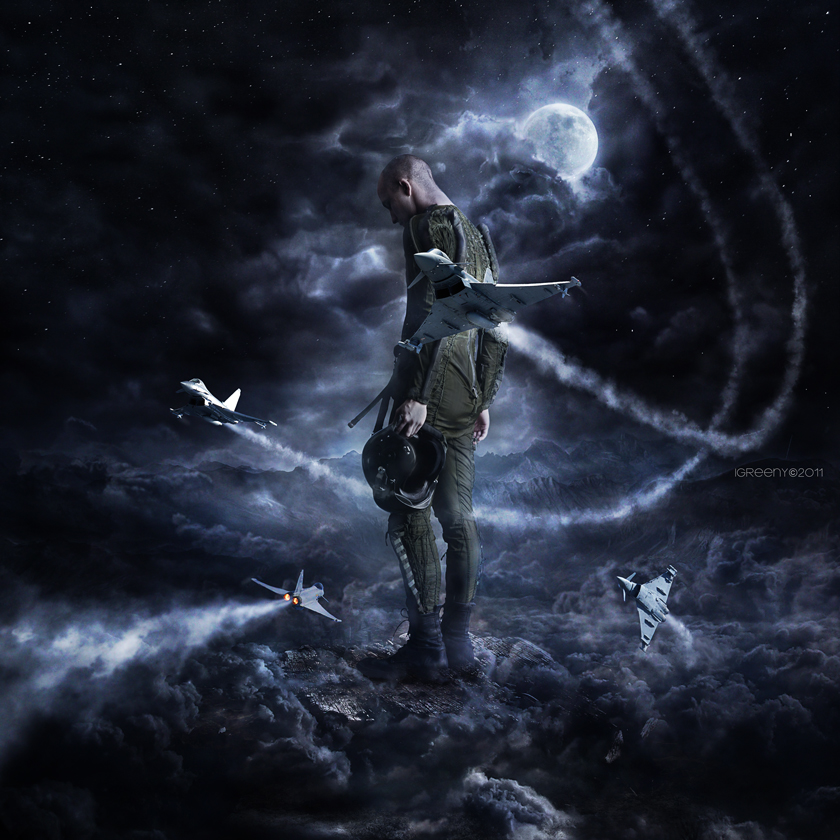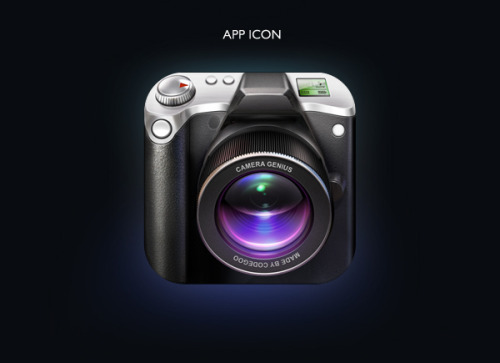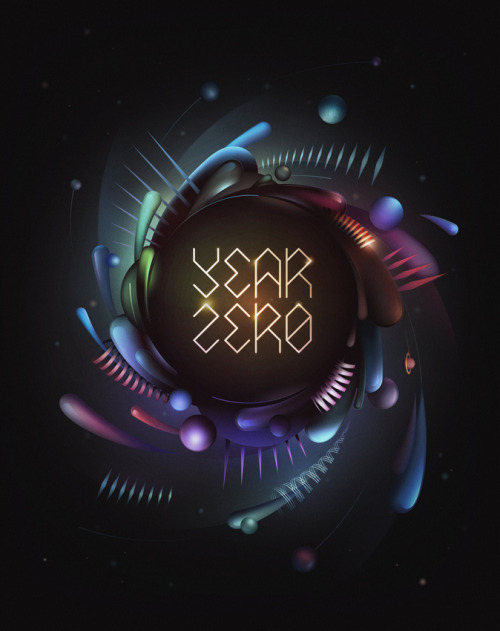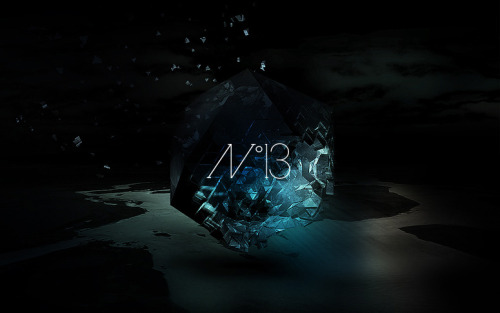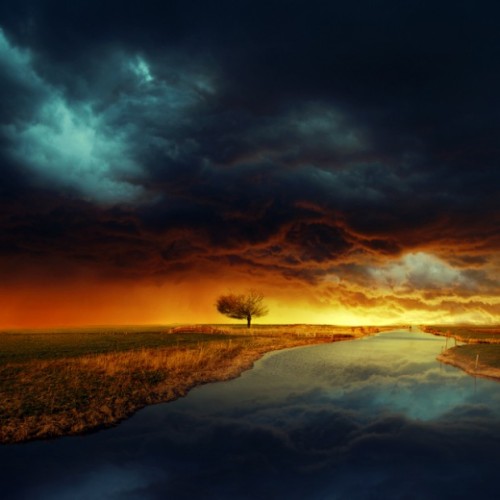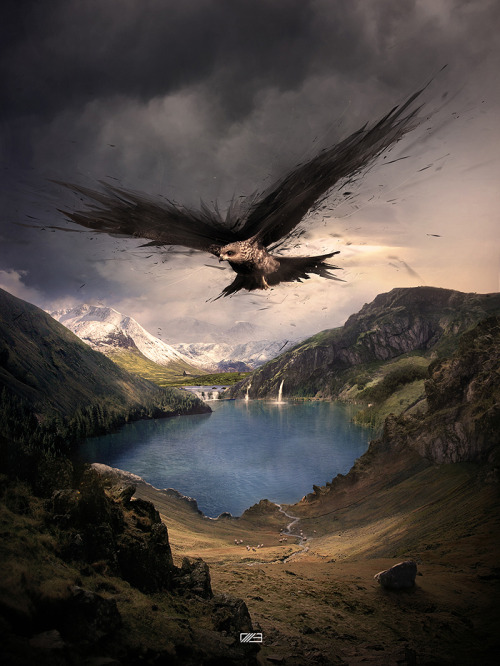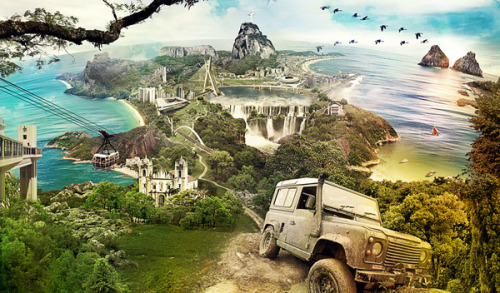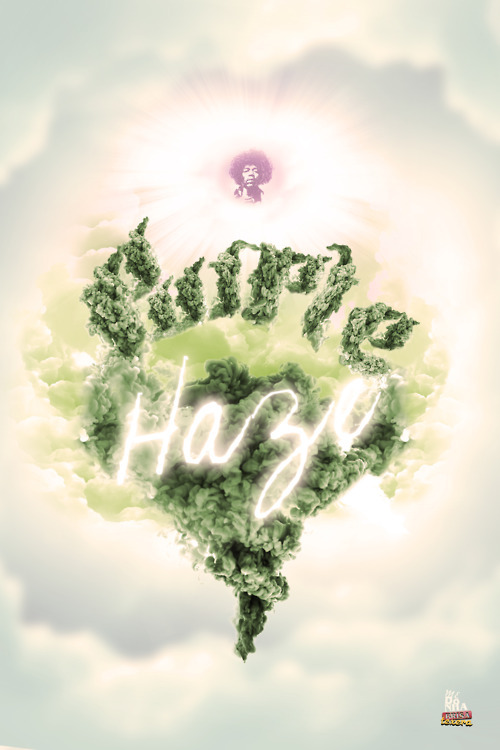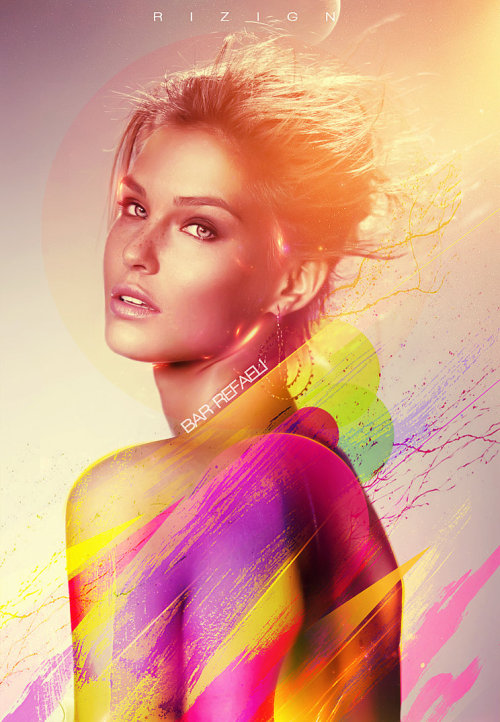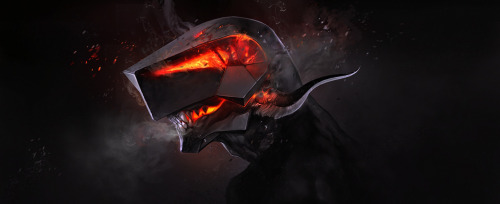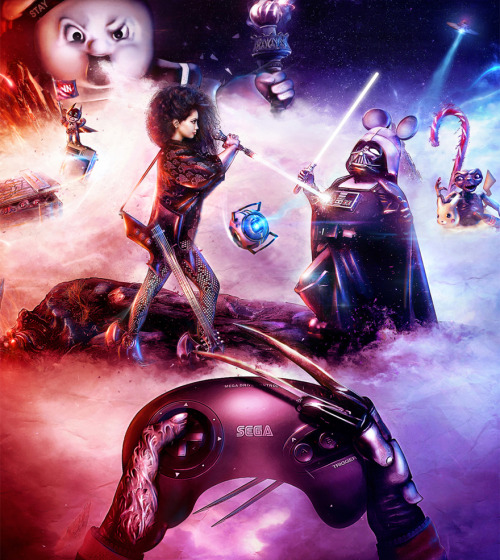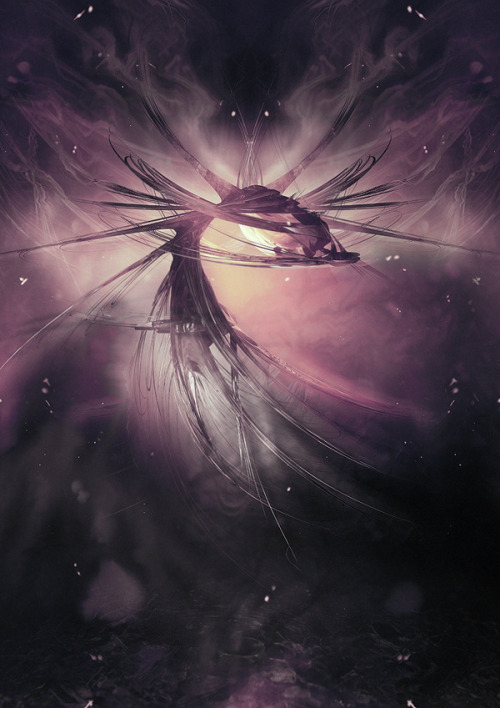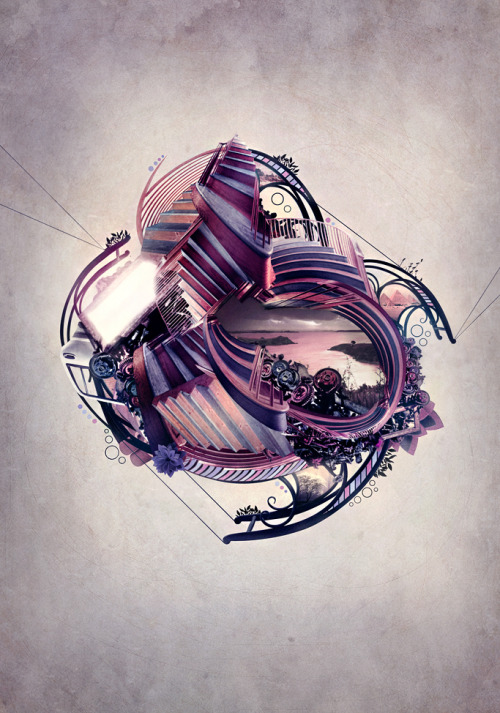Top 10 Albums Every Self-Respecting Science Fiction Fan Should Own
By Cyriaque Lamar and Charlie Jane Anders
 Science fiction changed music. And music saved science fiction. Most of our favorite flights of fancy and epic adventures are bound up in our minds with amazing musical scores, or epic theme songs. But some of the greatest pieces of music ever created were also inspired by science fiction and fantasy.
Science fiction changed music. And music saved science fiction. Most of our favorite flights of fancy and epic adventures are bound up in our minds with amazing musical scores, or epic theme songs. But some of the greatest pieces of music ever created were also inspired by science fiction and fantasy.
Over the past week, we've counted down the 100 albums that every science fiction and fantasy fan should listen to. And now, here it is: the top 10 albums that genre lovers should already adore.
Click to view10. Daft Punk - Discovery (2001)
You know an album's audio magic when basically every damn song could carry its own single. With this shiny, spacey hour of disco nouveau, the DJ duo of Thomas Bangalter and Guy-Manuel de Homem-Christo cemented their personas as night-clubbing robots. This music is so addictive it will close out every Sweet 16 for the next billion or so years, until the Sun's rising temperature turns our planet into a desiccated hellhole. Hopefully humanity will be jamming across the stars by then, not unlike the aliens from Leiji Matsumoto's anime adaptation of Discovery, Interstella 5555. (And for more Daftness, their Alive 2007 live album also slices and dices the best parts of their robo-inclined 2005 LP Human After All.) - Cyriaque Lamar
You know an album's audio magic when basically every damn song could carry its own single. With this shiny, spacey hour of disco nouveau, the DJ duo of Thomas Bangalter and Guy-Manuel de Homem-Christo cemented their personas as night-clubbing robots. This music is so addictive it will close out every Sweet 16 for the next billion or so years, until the Sun's rising temperature turns our planet into a desiccated hellhole. Hopefully humanity will be jamming across the stars by then, not unlike the aliens from Leiji Matsumoto's anime adaptation of Discovery, Interstella 5555. (And for more Daftness, their Alive 2007 live album also slices and dices the best parts of their robo-inclined 2005 LP Human After All.) - Cyriaque Lamar
Click to view9. Vangelis - Albedo 0.39 (1976)
We adore electronic pioneer Evangelos Odysseas Papathanassiou's work on 1975's Heaven and Hell(which gave us the theme to Cosmos) and the Blade Runner soundtrack, but this cosmic concept album makes our minds to turn to Carl Sagan, on the sheer force of "Pulstar" and "Alpha" alone. The title track is also a suitable proxy for a piece of disembodied alien AI floating by, shouting factoids in our planet's general direction. - CL
We adore electronic pioneer Evangelos Odysseas Papathanassiou's work on 1975's Heaven and Hell(which gave us the theme to Cosmos) and the Blade Runner soundtrack, but this cosmic concept album makes our minds to turn to Carl Sagan, on the sheer force of "Pulstar" and "Alpha" alone. The title track is also a suitable proxy for a piece of disembodied alien AI floating by, shouting factoids in our planet's general direction. - CL
Click to view8. Radiohead - OK Computer (1997)
Even before they name-dropped The Hitchhiker's Guide to the Galaxy and gave Bob Dylan an extraterrestrial veneer, Radiohead had already written history's greatest dystopian prom song. But when OK Computercame out, its (now-iconic) brand of pre-millennial malaise was a shocker — nobody expected this sort of album from that one-hit-wonder band who sang "Creep." Steeped in themes of technology-driven alienation and consumerism gone amok, OK Computer is the wail of a civilization that has yet to evolve the psychic organs to keep up with its own progress. Waiting for the Singularity sucks, but at least this album will commiserate with you in the meantime. - CL
Even before they name-dropped The Hitchhiker's Guide to the Galaxy and gave Bob Dylan an extraterrestrial veneer, Radiohead had already written history's greatest dystopian prom song. But when OK Computercame out, its (now-iconic) brand of pre-millennial malaise was a shocker — nobody expected this sort of album from that one-hit-wonder band who sang "Creep." Steeped in themes of technology-driven alienation and consumerism gone amok, OK Computer is the wail of a civilization that has yet to evolve the psychic organs to keep up with its own progress. Waiting for the Singularity sucks, but at least this album will commiserate with you in the meantime. - CL
Click to view7. Pink Floyd - Dark Side of the Moon (1973)
The record that launched a thousand laser planetarium shows, it's way easier to sync up Dark Sidewith the stellar flickers of the countryside night sky than The Wizard of Oz. After all, this loopy prog rock classic was written to organically represent the passage of life, from the inexorable march of time to the vicissitudes of the economy to the, hey, is that the International Space Station? Nope, just my flashlight. Whoa. Where was I? Oh right, The Wall. It's. Far. Out. - CL
The record that launched a thousand laser planetarium shows, it's way easier to sync up Dark Sidewith the stellar flickers of the countryside night sky than The Wizard of Oz. After all, this loopy prog rock classic was written to organically represent the passage of life, from the inexorable march of time to the vicissitudes of the economy to the, hey, is that the International Space Station? Nope, just my flashlight. Whoa. Where was I? Oh right, The Wall. It's. Far. Out. - CL
Click to view6. Kraftwerk - The Man-Machine (1978)
The truth is, we could populate half of this final ten with Kraftwerk albums — thanks to immortal tracks about radioactivity, synthetic romance, living mannequins, and the technological marvel that is the German highway system — but we're going with this particular cyborg-and-futureplex-tinged masterpiece due to our self-imposed rules. This Düsseldorf troupe has put an indelible robotic mark on the past four decades of music history, laying the groundwork for everything from synthpop to techno to hip-hop. If you require proof, here's six hours' worth. - CL
The truth is, we could populate half of this final ten with Kraftwerk albums — thanks to immortal tracks about radioactivity, synthetic romance, living mannequins, and the technological marvel that is the German highway system — but we're going with this particular cyborg-and-futureplex-tinged masterpiece due to our self-imposed rules. This Düsseldorf troupe has put an indelible robotic mark on the past four decades of music history, laying the groundwork for everything from synthpop to techno to hip-hop. If you require proof, here's six hours' worth. - CL
Click to view5. Parliament - Mothership Connection (1975)
This album defined a whole generation of science fiction funkateers, along with its sequel The Clones of Dr. Funkenstein. This is like the greatest jazz party album about flying up to a giant mothership in space you'll ever hear, featuring insane Fred Wesley horn charts, Bernie Worrell synthesizers and the tightest band on Earth in full swing. Two years before every other R&B band started doing Star Wars/Close Encountersspoofs, Parliament was pouring its heart and soul into begging the Mothership to swing down and let us all ride. They even built an actual working Mothership, to land on stage during concerts. (See video.) This is one of those albums where you still hear freaky, fascinating new stuff on your thousandth listen, but be warned — you'll find yourself quoting the album's many catch phrases to your bewildered friends and coworkers. — Charlie Jane Anders
This album defined a whole generation of science fiction funkateers, along with its sequel The Clones of Dr. Funkenstein. This is like the greatest jazz party album about flying up to a giant mothership in space you'll ever hear, featuring insane Fred Wesley horn charts, Bernie Worrell synthesizers and the tightest band on Earth in full swing. Two years before every other R&B band started doing Star Wars/Close Encountersspoofs, Parliament was pouring its heart and soul into begging the Mothership to swing down and let us all ride. They even built an actual working Mothership, to land on stage during concerts. (See video.) This is one of those albums where you still hear freaky, fascinating new stuff on your thousandth listen, but be warned — you'll find yourself quoting the album's many catch phrases to your bewildered friends and coworkers. — Charlie Jane Anders
Click to view4. Jeff Wayne's Musical Version of the War of the Worlds (1978)
Next to Orson Welles' famous radio broadcast, no other audio phenomenon has done so much to dramatize H.G. Wells' famous novel for mass audiences. Wayne's exciting, bouncy version is still being performed as a stage show today. The incredibly intense voiceover by Richard Burton perfectly complements the fuzzed-out guitar and driving rhythms, especially when the Martians actually show up and start slaughtering everybody with their heat rays. And then the synthesizers blare into eerie life. It could all be unbelievably goofy, if it wasn't so horrifying and spellbinding. Sealing the deal, the whole thing is gorgeously illustrated by some of the coolest science fiction artists of the time, including Roger Dean. - CJA
Next to Orson Welles' famous radio broadcast, no other audio phenomenon has done so much to dramatize H.G. Wells' famous novel for mass audiences. Wayne's exciting, bouncy version is still being performed as a stage show today. The incredibly intense voiceover by Richard Burton perfectly complements the fuzzed-out guitar and driving rhythms, especially when the Martians actually show up and start slaughtering everybody with their heat rays. And then the synthesizers blare into eerie life. It could all be unbelievably goofy, if it wasn't so horrifying and spellbinding. Sealing the deal, the whole thing is gorgeously illustrated by some of the coolest science fiction artists of the time, including Roger Dean. - CJA
Click to view3. Rush — 2112 (1976)
Rush is one of those 1970s bands whose proggy sound and fantasy/scifi lyrics appealed to Tolkien fans andStar Wars lovers alike. One side of this album is devoted to the tale of a dystopian future ruled by "the Priests of the Temples of Syrinx," whose "great computers fill the hallowed halls." The priests' symbol is the glowing red star on the album cover (which became a famous piece of Rush iconography). Basically this is one of the original scifi prog rock concept album moments, and to enjoy it you'll need to take out your irony earbuds and put on your earnest puffy headphones. — Annalee Newitz
Rush is one of those 1970s bands whose proggy sound and fantasy/scifi lyrics appealed to Tolkien fans andStar Wars lovers alike. One side of this album is devoted to the tale of a dystopian future ruled by "the Priests of the Temples of Syrinx," whose "great computers fill the hallowed halls." The priests' symbol is the glowing red star on the album cover (which became a famous piece of Rush iconography). Basically this is one of the original scifi prog rock concept album moments, and to enjoy it you'll need to take out your irony earbuds and put on your earnest puffy headphones. — Annalee Newitz
Click to view2. Janelle Monae - the ArchAndroid (2010)
Janelle Monae is one of the freshest musical voices to come along in years. In an era when everybody from Kanye West to Lady Gaga is invoking science-fictional themes, Monae still has a unique vantage point, a focus on the rights and subjectivity of posthumans, whom others seek to turn into objects. This album, with its themes of android liberation, manages to cover a ton of musical styles, from classical to classic R&B, while defying all of our preconceptions about gender and race. It's joyful and amazing and the music you'll dance to when the Singularity happens. Read our interview with Monae here. — CJA
Janelle Monae is one of the freshest musical voices to come along in years. In an era when everybody from Kanye West to Lady Gaga is invoking science-fictional themes, Monae still has a unique vantage point, a focus on the rights and subjectivity of posthumans, whom others seek to turn into objects. This album, with its themes of android liberation, manages to cover a ton of musical styles, from classical to classic R&B, while defying all of our preconceptions about gender and race. It's joyful and amazing and the music you'll dance to when the Singularity happens. Read our interview with Monae here. — CJA
Click to view1. David Bowie — The Rise and Fall of Ziggy Stardust and the Spiders from Mars (1972)
There was never really much debate about who would get the top spot — more about which album. Space Oddity? The Man Who Sold The World? But really, Ziggy Stardust is the album where Bowie creates his most complete science fictional, mind-expanding transformation. It's full of sadness and androgyny and friskiness and apocalyptic passion. Starting with the announcement that the Earth is ending in just five years, Bowie's masterpiece takes us through soul love and extraterrestrial salvation, but it all leads to self-destruction, long before the Earth is gone. The apocalypse, aliens, and a rock star who soars too high and then crashes to Earth — in most people's hands, this would be another zany rock opera. In Bowie's, though, it becomes one of the most thrilling albums ever made. — CJA
There was never really much debate about who would get the top spot — more about which album. Space Oddity? The Man Who Sold The World? But really, Ziggy Stardust is the album where Bowie creates his most complete science fictional, mind-expanding transformation. It's full of sadness and androgyny and friskiness and apocalyptic passion. Starting with the announcement that the Earth is ending in just five years, Bowie's masterpiece takes us through soul love and extraterrestrial salvation, but it all leads to self-destruction, long before the Earth is gone. The apocalypse, aliens, and a rock star who soars too high and then crashes to Earth — in most people's hands, this would be another zany rock opera. In Bowie's, though, it becomes one of the most thrilling albums ever made. — CJA

























